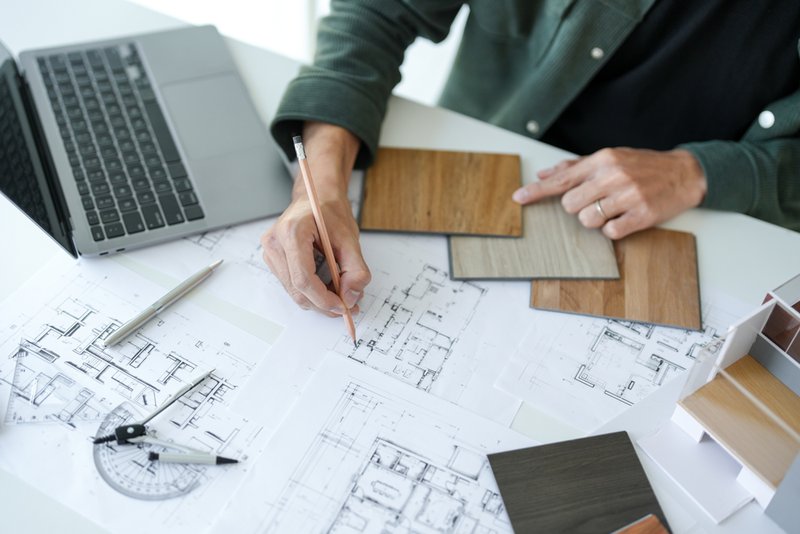Every home has a story—and sometimes, that story calls for a fresh chapter. Whether it’s outdated finishes, awkward layouts, or the desire to create a more functional space, a home renovation offers the opportunity to reimagine how a space looks, feels, and functions. But turning vision into reality requires more than creativity—it takes planning, patience, and the right approach at every stage.
Understanding the renovation process is the first step in avoiding common missteps and keeping your project on track. From laying the groundwork with design plans to managing construction and putting on the finishing touches, here’s what it really takes to guide a home renovation from concept to completion.
Home Renovation Starts with Purpose
A successful renovation always begins with a strong foundation—of ideas, priorities, and plans. Before construction can begin, homeowners should clearly define the goals of their project. Is the intention to open up a living space? Modernize an outdated kitchen? Improve energy efficiency? Clarifying the “why” helps direct every decision that follows.
Budgeting plays an equally vital role. A well-structured budget should factor in not just materials and labor, but also contingencies for the unexpected. Building in a buffer allows you to navigate changes without derailing the project timeline or compromising on quality.
Next comes design. Here, architectural flow and personal style must work in harmony. It’s important to think about how each space connects to the next—and how daily life happens within those spaces. Working closely with a designer or contractor during this phase can help transform ideas into plans that are both visually striking and technically sound.

Permits and Paperwork: What to Expect
Before demolition begins or a single nail is driven, the proper permits must be secured. This step is often underestimated in both importance and complexity. Local regulations vary, and many municipalities require permits for structural changes, electrical or plumbing work, and even some exterior updates.
Missteps in this stage—such as missing paperwork or code misinterpretations—can lead to frustrating delays or forced rework. One of the smartest moves a homeowner can make is to partner with professionals who are experienced in navigating local permitting processes. Their familiarity with building codes, required documentation, and approval timelines helps ensure everything is in place before construction begins.
Managing the Home Renovation Construction Phase
Construction is where vision takes physical shape—and where patience is truly tested. It’s also where communication becomes essential. Even the best-laid plans will shift in response to discoveries behind walls, backordered materials, or evolving homeowner preferences. Staying flexible and informed is key to managing progress without stress.
Selecting the right contractor sets the tone for the entire process. It’s worth taking the time to review portfolios, talk with past clients, and ensure the team you hire shares your standards for quality and transparency.
Throughout the build, regular check-ins—whether in person or virtual—help maintain momentum. Open dialogue between homeowners and contractors makes it easier to catch issues early, avoid misunderstandings, and adjust course as needed.
While no one likes surprises mid-project, being prepared for the occasional hiccup is wise. Structural problems, hidden damage, or supply chain slowdowns are common. Having a backup plan (and budget buffer) in place can turn these roadblocks into manageable detours.
Finishing Touches That Bring It All Together
As construction wraps up, attention shifts to the elements that will bring warmth, comfort, and personality to the space. Fixtures, finishes, and final inspections all happen during this phase—and they matter just as much as the framing and wiring that came before.
Walkthroughs with your contractor should be thorough. Test each system, inspect the workmanship, and note any final adjustments that need to be made. It’s your opportunity to ensure that the outcome aligns with the original plan—and that every detail feels complete.
When possible, bring your design vision full circle by referencing your initial goals. The more cohesive the connection between concept and completion, the more satisfying the end result.
Planning for the Unexpected
Even the most well-organized home renovation can take an unexpected turn. Mold behind walls, outdated electrical systems, or structural deficiencies uncovered during demolition can all impact scope and schedule. The best way to handle surprises is to plan for them from the beginning.
Including a 10–20% contingency in your budget provides room for unexpected costs. Additionally, working with experienced professionals who know how to respond to these situations ensures that decisions can be made quickly and wisely. The ability to pivot, adapt, and re-align your timeline or materials can turn an unplanned issue into an opportunity for improvement.
Energy Efficiency and Modern Features
Today’s home renovation projects often go beyond cosmetic upgrades. Many homeowners are choosing to incorporate energy-efficient features that reduce long-term costs and environmental impact. Upgrades like better insulation, new windows, energy-efficient HVAC systems, and LED lighting not only increase comfort but also boost resale value.
Smart home technology is another growing trend. From automated thermostats to integrated lighting and security systems, these additions enhance convenience and future-proof the home. Renovations present the perfect opportunity to implement these systems while walls and wiring are already exposed.

Timing and Seasonal Considerations
The timing of a home renovation can greatly influence the pace and outcome of the project. Seasonal factors like weather, material availability, and contractor schedules should all be considered. For example, roofing and exterior work are often best completed in dry, warm months, while interior renovations can take place year-round.
Planning around your own schedule is equally important. Consider how long you’ll need to vacate or relocate, especially if the renovation affects essential areas like the kitchen or bathrooms. Aligning your timeline with your lifestyle helps reduce stress and allows the work to progress more smoothly.
Setting Expectations and Staying Grounded
One of the most important aspects of a home renovation—beyond materials and labor—is mindset. Successful projects are built on realistic expectations. Delays may happen. Designs might shift. What matters is maintaining a clear sense of purpose and a strong partnership with your renovation team.
Staying organized also makes a difference. Track receipts, notes, and contracts. Keep copies of permits and communication records. These details offer clarity and prevent costly misunderstandings along the way.
Renovations aren’t linear. They're full of decisions, discoveries, and opportunities to rethink and refine. Embracing the process as part of the transformation helps you stay motivated, even through the messier middle stages.
Where Home Renovation Expertise Meets Craftsmanship
At Konrady & Son Construction, we don’t just build—we partner with homeowners to bring their renovation visions to life. Whether you're reworking a single room or reimagining your entire home, we guide clients through every stage, from concept and permitting to construction and final walkthroughs.
Our renovation services are grounded in craftsmanship, communication, and thoughtful planning. And because many of our projects involve existing coastal homes, we understand the unique challenges and opportunities that come with location and lifestyle. For added peace of mind, our team can also support long-term property maintenance through property management services, as well as protect your home with our storm protection systems.
Ready to build the home of your dreams? Send us a message today.
Leave a Reply Cancel reply
site design
Monday - Friday
8:00 AM- 5:00 PM
435 Eastwood Rd
Wilmington, NC 28403
